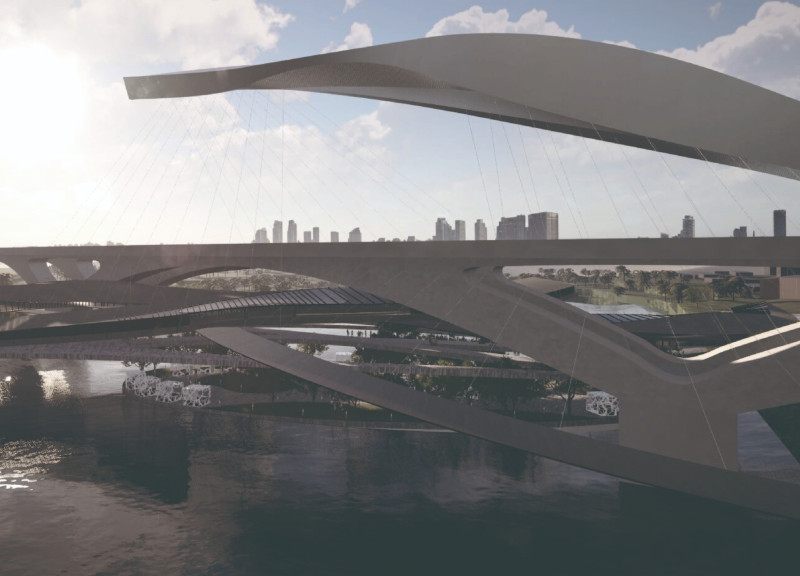5 key facts about this project
## Project Overview
Located in Bitan, Hsinpei, Taiwan, the Shoreweave project addresses the interplay between the natural landscape and urban development within a densely populated region. The design integrates landscape architecture with urban planning to create a multifunctional space that meets ecological and social needs, while respecting the area's unique geographical context characterized by striking cliffs and winding river paths.
### Spatial Organization
The Shoreweave design delineates residential and public spaces into distinct yet interconnected zones. The residential area comprises four housing types: Solo Units cater to individuals or couples; Family Units are spacious and equipped with multiple bathrooms; Shared Spaces allow for flexible living arrangements; and Public Facilities foster community interaction and recreational opportunities. This spatial strategy balances private and public realms, promoting social engagement without compromising individual privacy.
### Materiality and Sustainability
Material selection is a critical component of the project, with a focus on durability and aesthetic integration. Structural Steel forms the framework, while Glass façades enhance natural light and views. Concrete is utilized in foundational aspects and pedestrian pathways, ensuring robustness, and Wood is incorporated in residential units to provide warmth. Natural Stone features in landscaping, promoting a cohesive aesthetic with the natural terrain. Sustainability initiatives, including water management systems and green roofs, capture rainwater, enhance drainage, and improve local microclimates, solidifying the project's ecological footprint.
### Urban Integration
Connectivity is a priority in the Shoreweave design, linking waterfront areas and facilitating pedestrian mobility through strategically placed pathways and viewpoints. These elements invite residents to engage with both the natural environment and community spaces, enhancing overall well-being and fostering a sense of community.



















































